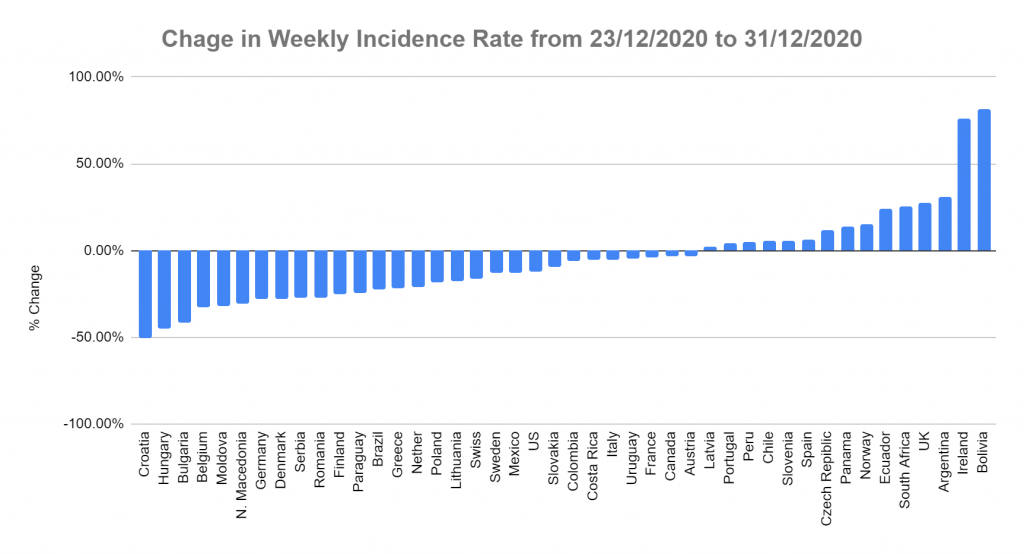As we wish our readers Merry Christmas and a happy 2021, we’d also like to note that the while holiday period might be festive, it’s also a bit problematic for us data collectors. Doctors’ offices close for the holidays, test centers reduce capacity and the system as a whole reports a smaller percentage of the new pandemic cases actually occurring in the population. This makes it hard to tell the signal from the noise, i.e. to decide whether a specific drop in case numbers is real, or is only an effect of the holiday season. This difference in interpretation could be critical in several European states, which are anxiously awaiting the results of newly-instated lockdowns and control measures.
To answer this question, we employed a comparative approach. To do so, we compared the weekly incidence rate [calculated in the Pandemonitor dashboard as the number of weekly cases per 100,000 inhabitants] on holiday week (the week ending on 31/12) and on the week before (the one ending on 23/12). We made the comparison for 44 predominantly Christian countries around the world (leaving out a few minor countries as well as place where data is suspect).

The results (shown in the chart above) are impressive. While most countries (29 of 44) recorded a drop in cases over the holiday period, over a third of those surveyed actually saw a rise in the incidence rates – and in some cases, a steep one. Moreover, while the average drop in our survey was 5.7% and the media was 7.5%, quite a few states recorded larger drops in cases, with 15 of them seeing drops of over 20%. It is probably safe to assume that in these places (which include states like Croatia, Germany and Belgium which are currently under lockdown), the holiday drop is not only a data construct but signifies an actual decrease in the incidence rate – while the places where the incidence rate increased significantly over the holiday (such as South Africa, the UK, Ireland, Argentina and Bolivia) may be in big trouble.
